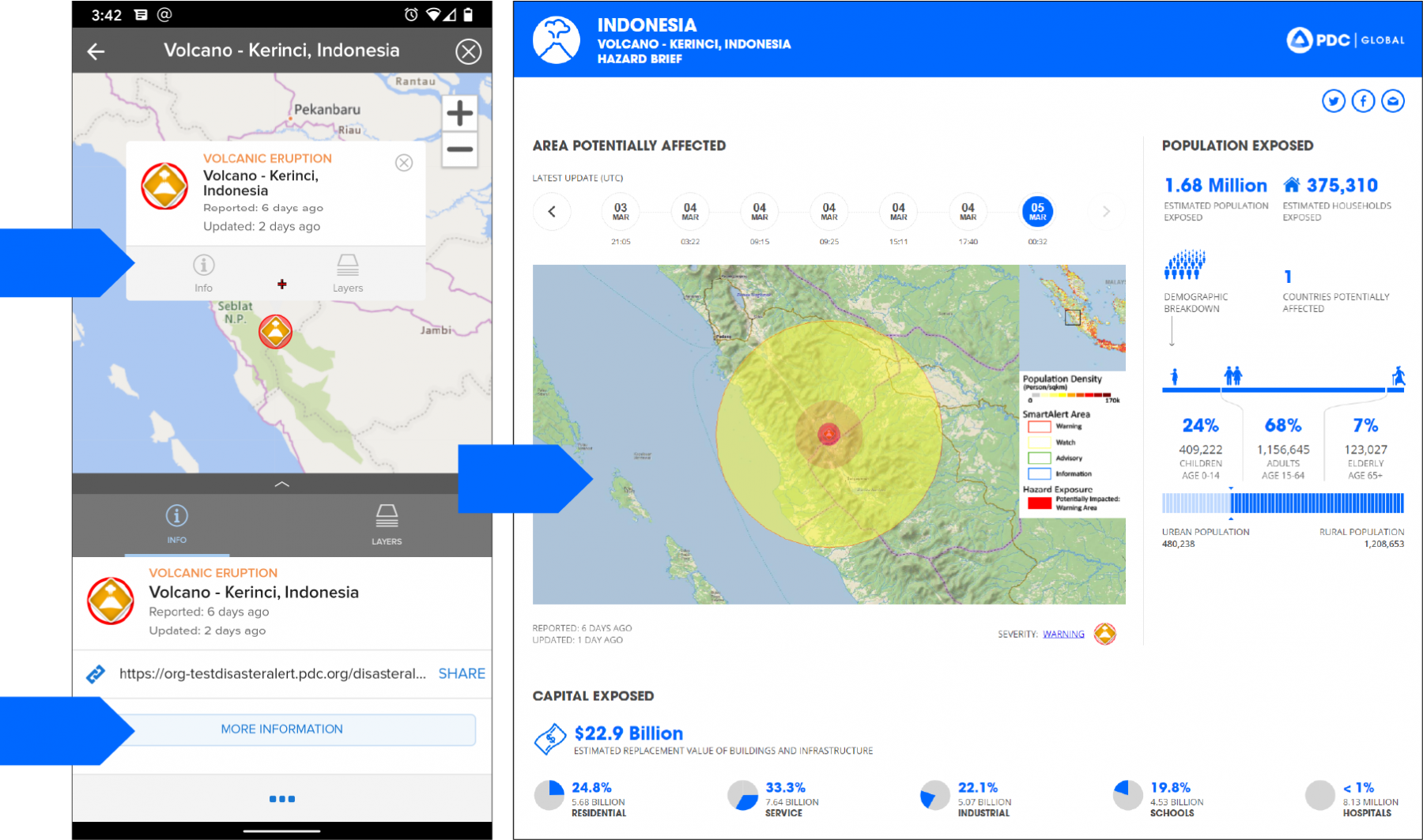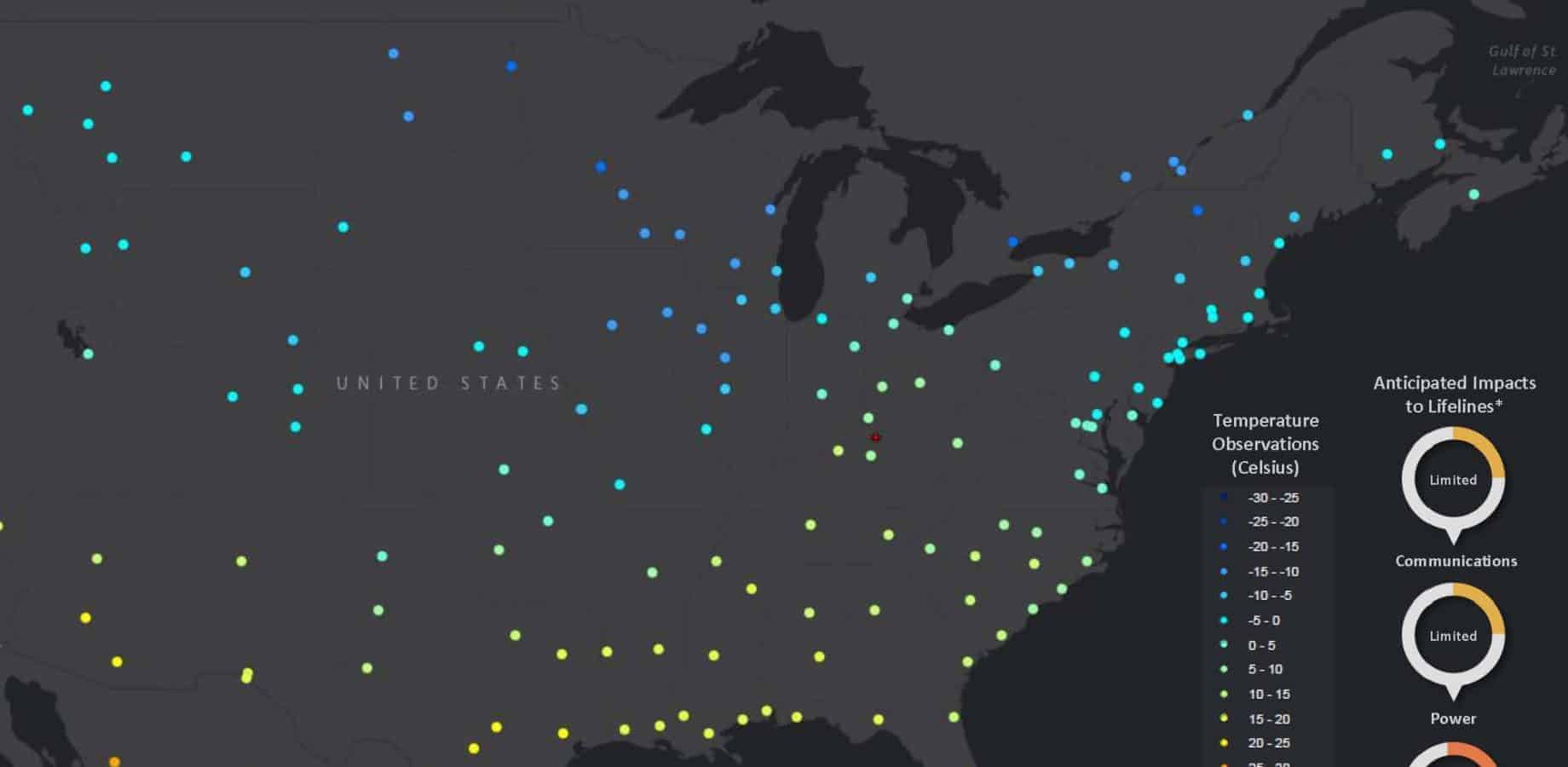 Your source for extreme temperature hazard information
Your source for extreme temperature hazard information
Our DisasterAWARE Pro platform, as well as our Disaster Alert™ public app, provides information about extreme temperature hazards happening around the world. Information is derived from a variety of scientific monitoring agencies.
Reporting Threshold
DisasterAWARE provides information about hazards from extreme temperature when conditions present the potential for adverse impacts to population or infrastructure.
Coverage
√ Global (Manually Processed)
SmartAlert™ Advanced Early Warning for Extreme Temperatures
DisasterAWARE Pro now includes PDC’s proprietary SmartAlert technology. You select the areas and hazards to monitor and we’ll alert you to threats within or approaching those areas automatically.
Alerting Severities:
Severity levels are determined by PDC’s risk intelligence platform based on data and observations from authoritative agencies.
Available Formats
Professional versions: SMS Text | Email | App Alerts
Public version: App Alerts Only
Be Aware and Prepare
Always heed instructions from local authorities and receive alerts about major hazards from PDC’s DisasterAlert app or on the DisasterAlert website.

Act now
- Extreme Heat
- Find air conditioning.
- Avoid strenuous activities.
- Watch for heat illness.
- Wear light clothing.
- Check on family members and neighbors.
- Drink plenty of fluids.
- Watch for heat cramps, heat exhaustion, and heat stroke.
- Never leave people or pets in a closed car.
- Extreme Cold
- Stay indoors and dress warmly.
- Prepare for power outages.
- Use generators outside only and away from windows.
- Listen for emergency information and alerts.
- Look for signs of hypothermia and frostbite.
- Check on neighbors.
Plan ahead
Live in or plan to visit an area that experiences extreme heat or cold?
- Extreme Heat
- Find places in your community where you can go to get cool.
- Keep your home cool by doing the following:
- Cover windows with drapes or shades.
- Weather-strip doors and windows.
- Use window reflectors, such as aluminum foil-covered cardboard, to reflect heat back outside.
- Add insulation to keep the heat out.
- Use attic fans to clear hot air.
- Install window air conditioners and insulate around them.
- Learn to recognize the signs of heat-related illness.
- Extreme cold
- Know your area’s risk for winter storms.
- Prepare your home to keep out the cold.
- Pay attention to weather reports and warnings of freezing weather and winter storms.
- Gather supplies in case you need to stay home for several days without power.
- Create an emergency supply kit for your car.
- Learn the signs of, and basic treatments for, frostbite and hypothermia.
Hazard Brief
Real-Time Impact and Needs Assessment
Through DisasterAWARE Pro and Disaster Alert you get access to PDC’s unique exposure modeling capabilities—providing accurate assessments of exposure and need for hazards in any part of the world.
How to access Hazard Brief (available for all hazards)


Helpful Features and Layers
DisasterAWARE provides several layers of information to help assess the impacts of tropical cyclones. These include but are not limited to:
• Surface Air Temperature*
• Global Weather Observations (METAR)*
• U.S. Watches, Warnings and Advisories*
• Land Surface Temperature Anomaly – Daytime (8 day)*
• Global Snow Cover (8 day)*
* = For disaster management practitioners only




